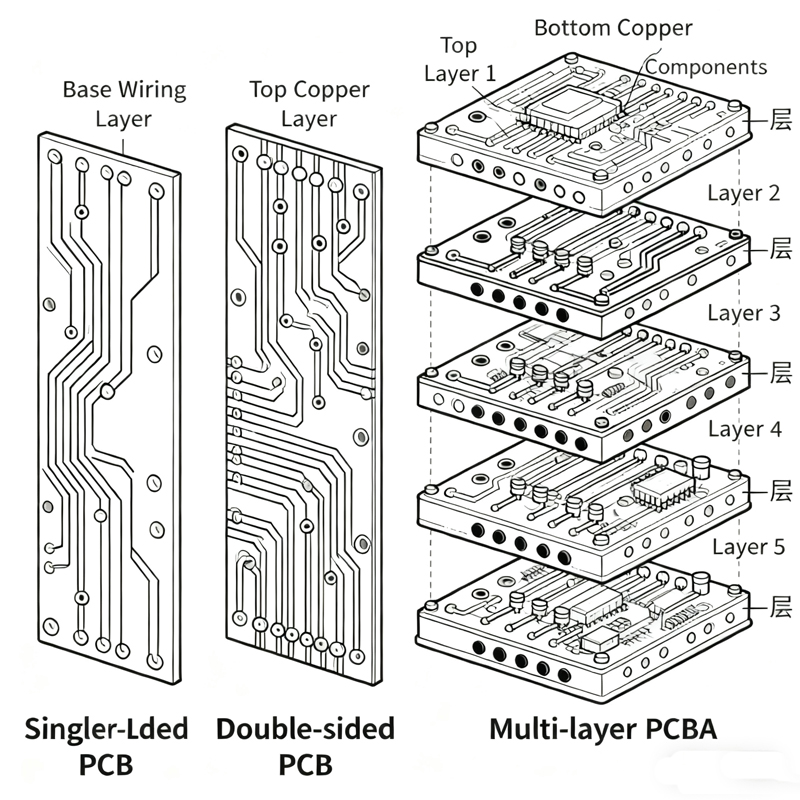Date: 2025-11-03
Let me break down how PCB layers work in plain terms. Think of it like building a house - more floors let you do more, but cost more to build.
Single-Layer Boards: The Starter Home
One copper layer, usually on the bottom
Simple point-to-point wiring only
Cheapest option, fastest to make
Good for: Basic toys, simple power supplies, low-cost gadgets
Double-Layer Boards: The Two-Story House
Copper on both sides, connected by small holes (vias)
Twice the routing space of single-layer
Still affordable, widely available
Good for: Most consumer electronics, home appliances, basic controllers

Multi-Layer Boards: The Apartment Building
4-8 layers stacked together
Can separate power, ground, and signals
Better performance, less electrical noise
Costs more, takes longer to make
Good for: Smartphones, computers, automotive electronics
High-Layer Boards: The Skyscraper
10+ layers of complex circuitry
Handles very dense, high-speed designs
Best performance and reliability
Most expensive, requires expert manufacturing
Good for: Servers, medical equipment, aerospace systems
The Reality Check
More layers aren't always better. I've seen many designers over-specify their boards. If your design works on 4 layers, don't use 6. Every extra layer adds cost and complexity.
Our Advice
If you're not sure what you need, just ask. We'll look at your design and tell you the most cost-effective way to build it. Sometimes moving to more layers makes sense, sometimes we can optimize your layout to stay with fewer layers.
The goal is to get you a board that works reliably without paying for more than you need. We build all these types every day, so we can help you find the right balance for your project and budget.
Remember: The best PCB is the one that does its job well, ships on time, and doesn't blow your budget. Layer count is just one piece of that puzzle.
Kaboer manufacturing PCBs since 2009. Professional technology and high-precision Printed Circuit Boards involved in Medical, IOT, UAV, Aviation, Automotive, Aerospace, Industrial Control, Artificial Intelligence, Consumer Electronics etc..